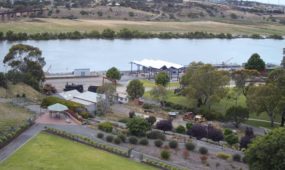New tool kit will help save trees from climate change
Uncategorized
A NEW tool kit has been developed for researchers to accurately predict the vulnerability of trees to climate change.

Sign up to receive notifications about new stories in this category.
Thank you for subscribing to story notifications.
Developed by Professor Andrew Lowe, Chair in Plant Conservation Biology at The University of Adelaide, the approach combines field studies and biological modeling with DNA analysis.
Lowe said the kit will assist scientists, governments and community groups to make evidence-based decisions for survival of endangered and sensitive plant-life.
“Tools like this give us realistic information on how living ecosystems are going to cope with variations in the climate,” Andrew Lowe, The University of Adelaide.
“We can work out which communities of plants are going to change, which particular species are going to be affected more than others and how quickly that impact is likely to be,” said Lowe.
With the bulk of the work performed by honours student Kimberly McCallum, the tree in Lowe’s most recent study was the Needle Bottlebrush (Callistemon teretifolius).
Endemic to South Australia, the plant grows in the Mount Lofty and Flinders Ranges, and used to also exist further north in the hotter and drier Gammon Ranges. Historical samples of the plant are stored in South Australia’s herbarium
“This species is an important under-story shrub which supports pollinators like butterflies and beetles,” explained Lowe.
“We used molecular analysis of the DNA in bottlebrush samples to map the genetic characteristics of the past and current distributions of the shrub, and then combined these with field assessments and modeling to predict future tree distribution patterns under a range of environmental scenarios,” Lowe said.
This unusual approach holds high value because it allows scientists to glance both backwards and forwards.
Moving back in time, the tool shows that the tree has survived in some locations even though there’s been a huge variation in average temperature over millions of years – as much as 6 degrees Celcius. In the forward direction, the modeling shows that if the planet warms by 1.5 degrees by 2030, or even by more than 4 degrees by 2070 – with associated changes in rainfall – there are still areas where the plant can survive.
The approach also allows the scientists to see which combinations of genes are most successful in each area.
“What this gives us is a very unique opportunity to improve the chances that this shrub can survive,” said Lowe.
“Ideally, what we want to be doing is moving genetic material from these northern locations – where it’s adapted to warmer and drier conditions – down to these more southerly locations based on what we think the conditions will be like here in the future.”
“And this is something we can do right now,” Lowe said.
Lowe’s research group is already having an influence on how native plants are managed in Australia.
“Scientists use an approach called predictive provenancing, also referred to as assisted migration. We mix genetic stock of plants from a number of locations and allow the trees to grow at a plantation site. So you give the trees the chance to adapt with the most useful genes for that site,” Lowe explained.
“We’ve been writing guidelines on this topic for Greening Australia and Trees for Life. Both of these groups have taken up our advice.”
“We are also working with Greening Australia to revegetate South Australia’s Yorke Peninsula,” said Lowe.
“Historically, the preference has been to use local provenance for restoration of plant populations. We’ve convinced them that climate change is here, and the techniques for restoration have to be adapting to meet this reality.”
Jump to next article



